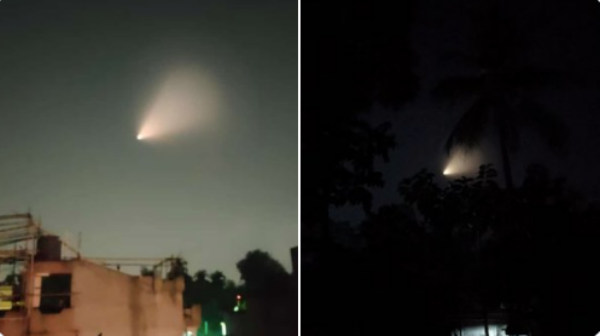Days after Tawang clash, India successfully carries out night trials of over 5,000 Km range Agni-5 ballistic missile
16 Dec 2022 10:40:04
New Delhi, Dec 16: Days after the Tawang clash between Indian and Chinese troops, India successfully carried out the night trials of the nuclear-capable Agni-5 ballistic missile, which can hit targets beyond 5,000 km on Thursday.

The test was carried out to validate new technologies and equipment on the missile, which is now lighter than before. The trial has proved the capability to enhance the range of the Agni V missile, if required. The test-firing of the missile from the APJ Abdul Kalam Island off Odisha coast came amid India's ongoing border row with China.
Notably, the Agni V project is aimed at boosting India's nuclear deterrence against China, which is known to have missiles like Dongfeng-41 having ranges between 12,000-15,000 km.
Agni V can bring almost the entire Asia, including the northernmost part of China as well as some regions in Europe, under its striking range. The Agni 1 to 4 missiles have ranges from 700 km to 3,500 km and they have already been deployed. India carried out a similar test of the missile in October last year as well.
In June, India successfully carried out a night launch of the nuclear-capable Agni-4 ballistic missile, in a boost to India's military capabilities. Following the test, the defence ministry had said that it reaffirmed India's policy of having a "credible minimum deterrence capability."
The missile, which uses a three-stage solid-fuelled engine, is capable of striking targets at ranges up to 5,000 kilometres with a very high degree of accuracy, according to the Defence Ministry. The ministry further stated that the successful test of Agni-5 is in line with India's stated policy to have 'credible minimum deterrence' that underpins the commitment to 'No First Use'.
